Interview : Sebastien Charlier, total chromaticism.
Rebooting Planet Harmonica 10 years later gives us the opportunity to interview the musician who definitely contributed to change the diatonic harmonica world over this period. His artist’s statement has been disputed for a while but it is now widely regarded as relevant and Sebastien broadly contributed to the widespread sharing of the chromatic playing on a diatonic harmonica, thanks to his records and teaching (textbooks, lessons, courses). More and more harp players are now putting aside the usual position-oriented approach and address music as any other kinds of musicians, by studying harmony.
This interview aims to a better understanding of how this outstanding musician works, how this out-of-the-box thinker turned the harmonica long-standing tradition upside down.
PH : First of all, could you tell us about your personal musical history ?
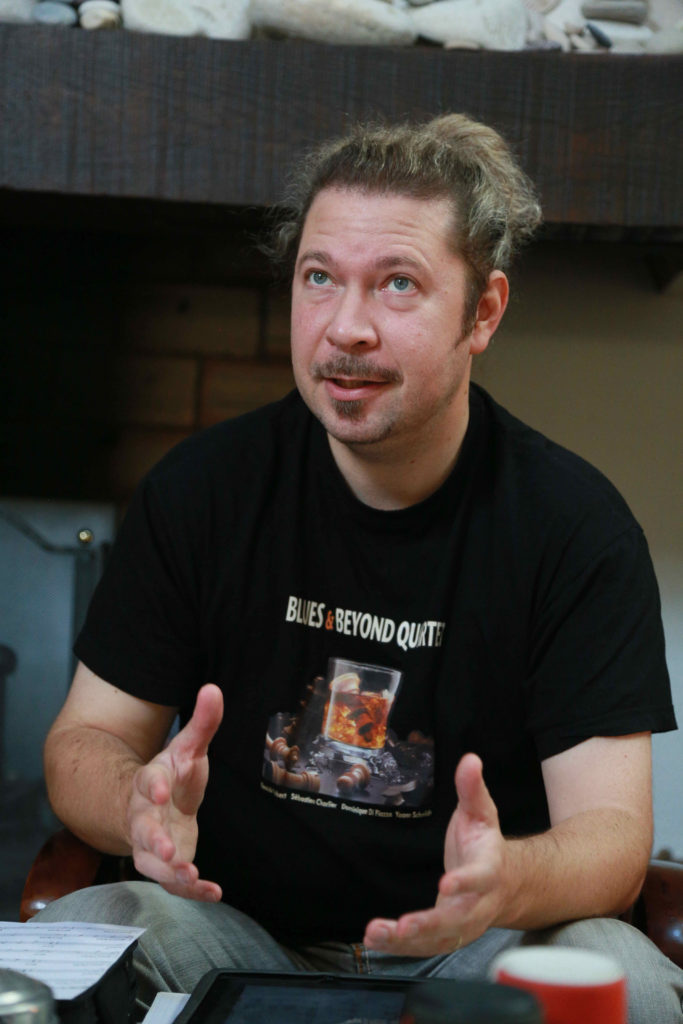
Seb : I went to music pretty late, I was about 14. There was a music club at school, so I could play with my buddies, meet new people, and, by the way, classroom girls seemed to be interested in music. Let’s say it was a way to socialize… I asked my parents for an electric guitar but it was too expensive and they thought I would neglect school if I dedicated too much time to music, so they bought me… a harmonica (surprising strategy…). That was a very beautiful chromatic, 10 holes, a Chromonica, a “true” instrument. So I started to blow it, trying to find the notes, some sounds. Since I had never studied music at the time, my ears were not finely tuned, I couldn’t get neither intervals nor frequencies, I had really tough time. But after a few weeks, I could play some tunes pretty easily. Later on, I found a diatonic in a shop (which was unfortunately about to close down) that looked like a true Ali Baba’s cave. A harmonica without the slide button : I was eager for feeling the difference. Who knows, maybe I could get a genie out of this diatonic lamp ? I expected a lot, because I wasn’t really pleased with the sounds I was struggling to get with my Chromonica. I have to say I achieved draw bends right away, and to me these new sounds really rang a bell. Of course, the harmonica layout was not the same, but some minutes later I could play the F and the A on the low octave. At the time, I couldn’t realize that my bending technique (which I didn’t know anything about at the time) was going to lead me to quite a unique vision of the instrument. The only book I had about harmonica claimed the diatonic capabilities were limited, it never mentioned bends, probably the author hadn’t really investigated what he was talking about… And as far as harp players were concerned, I only listened to those who played on my fathers’ records : brit rock bands, lining up harp players that were not really harmonica players but rather singers who played a bit of harmonica. So I made a bet on playing an instrument that was not taken seriously (by the way, is it, nowadays ?) but my first bends showed me right away how large the opportunities of this instrument could be.
PH : It’s great you could play F and A immediately. Usually, we don’t get anything from hole 2, so we go back to the shop saying the harmonica doesn’t work and asking for a refund 🙂
Seb : Well, for me, it was quite the opposite, I bent the 4 hole draw right away, and I noticed it was the same C# I used to get with my chromatic by pressing the slide button, and I said to myself : cool, it seems I can get most or even all the notes without any sliding. I noticed it didn’t work on the high range (draw) but it sounded pretty well in the low one. And little by little, at the school music club, I kept on trying to make sounds and find the melodies that our demanding pianist proposed. At the time, we all tried to do covers of Cure, Tears For Fears or Springsteen songs. I tried to play on my diatonic what I used to play on the Chromonica : notes, melody and also chords, successfully or not. At the time, I didn’t play overblows so some notes missed but not that many, and, overall, I had fun in trying to get these sounds. I couldn’t really articulate sounds but I gradually managed to play single notes more and more accurately. In short, a very interesting and funny instrument.
And later on, I completely gave up my chromonica (I still have it somewhere) since I was able to play melodies without having to slide the button, it was far more fascinating to me. I also thought the sound was nicer. I liked the asymmetrical octave layout of the diatonic harmonica, I thought it was more logical to play phrases that way rather than on an instrument that shows two C in a row on holes 4-5 and 7-8 for instance.
So I kept on playing the diatonic harmonica since I preferred its sound and layout. Still, I wasn’t really listening to harp players at the time, because of the kind of music we used to play at the music club. However, from time to time, I could find some bands tracks featuring harmonica, such as Eurythmics, Christians, Supertramp…So I bought other diatonic harmonicas.
PH : Did you play other harps when you couldn’t get the melody on a C ?
Seb : I used to switch harps for two reasons. Either I had to play those « overnotes » that I hadn’t got yet because I didn’t even know they existed (I managed to block the reed but I didn’t get any sound). Or I switched harp because I noticed harmonica players I listened to used to switch harps. It’s easy to see when harp players don’t use the same harmonica as yours….but you still have to identify which is the right one, or, say, theirs. When I wanted to play as they did (chords, timbre, type of sound), I used to switch harps.
Later on, I began listening to true harmonica players. I was a student at the university (around 88), with some more advanced musicians who talked to me about Charlie Mc Coy or JJ Milteau. At the time, they were the only harp players you could find at your record store, they were really great harmonica ambassadors but it was tough to find other players anywhere. We had no internet at the time !
PH : I remember the times, the 90’s roughly, we could only find JJ Milteau’s books.
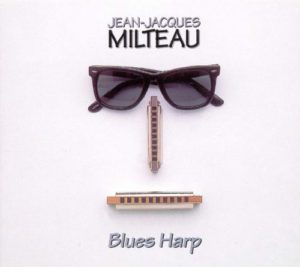
Seb : Yes, and his books were already well known and widespread in the country, but I was looking for other kind of information. I already had worked on Charlie Mc Coy and JJJ Milteau records. I had roughly transposed all their tracks, not necessarily at a very detailed level but that was ok. Some JJM’s phrases gave a real tilt, notably in Explorer, Bluesharp…With some uni mates, I started to play some Stanley Clarke tunes, Weather Report, Jazz Fusion, stuff that was going far from the usual harmonica textbooks.
PH : Did you work on harmony ?
Seb : Not at all, at the time. I relied on my ears. I din’t really get everything but I tried to play that style, with a similar energy.
But on my first year at the uni, I met Nicolas Espinasse, who taught me modes. And also Yves Cutulic, who played the guitar in a band that kindly involved me although I thought I was not advanced enough to play with them. He was keen on harmony and very strong at it, and he taught me the basics of modern harmony : chromatic circle and transposition, chord building, cadence, melodic minor scale harmonization etc…I was fascinated because it looked like doing math. And since I had a science academic background (even though I went into philosophy later on), this math side of music seemed quite fun and easy to me. I was happy to rely on the logic involved in it. So I worked really hard, I read many books on harmony but I never took any lesson. I had to read plenty of books before understanding where the colors of musicians like Allan Holdsworth came from.
I used to listen to many jazz & fusion soloists that I loved although I didn’t understand what they were doing. I guess that’s what made me grow, and go in the best direction. I had the feeling it was possible to tell a new story with a diatonic harmonica.
PH : Had you ever heard Howard Levy at the time ?
Seb : Not at all. I’ve only heard about him much later.
PH : So, we’re back in the 90’s, you try to play Allan Holdsworth’s music and to put together your first album.
Seb : Yes, but I couldn’t achieve it. Therefore I decided to play the Yamaha midi wind controller, a kind of electronic sax featuring alternate fingering that you can’t find on “acoustic” instruments. I had the feeling I could play Allan Holdsworth’s music much easier on a wind controller than on a diatonic, even if I could already play all the 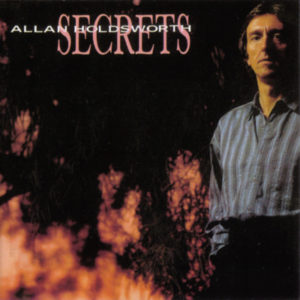 notes at the time. The design of the instrument seemed also simpler for playing purposes. Since I worked as a demonstrator for Yamaha, I finally mastered the instrument and ended up playing it on stage. Phrasing was much easier for me on the wind controller at that time. However, I understood it was better for me to be clearly identified, as a musician, to a typical sound ; the wind controller, a synthesizer featuring an infinite range of sounds, would not likely to be seen a main instrument. And, at that time, I began to be able to play bebop phrases on my diatonic harmonica. I had discovered overblows by chance when I had to disassemble the harp in order to fix a reed blocking, then I could understand the whole underlying mechanism and find out all the notes.
notes at the time. The design of the instrument seemed also simpler for playing purposes. Since I worked as a demonstrator for Yamaha, I finally mastered the instrument and ended up playing it on stage. Phrasing was much easier for me on the wind controller at that time. However, I understood it was better for me to be clearly identified, as a musician, to a typical sound ; the wind controller, a synthesizer featuring an infinite range of sounds, would not likely to be seen a main instrument. And, at that time, I began to be able to play bebop phrases on my diatonic harmonica. I had discovered overblows by chance when I had to disassemble the harp in order to fix a reed blocking, then I could understand the whole underlying mechanism and find out all the notes.
PH : How did you get the tongue positions involved in your playing ? It seems obvious when you come to explain it, but I guess you went through many trials and errors before getting it ?
Seb : The issue is that until 98, I couldn’t play overnotes as I used to play the opposite bends. I felt I had to play differently, blocking a bit more, and that the position was a bit different. So it requested a tighter setting of the reed gap (since the technique was weaker). By playing with musicians like Benoît Sourisse and those I met thanks to violin player Didier Lockwood, I noted I had to change something if I wanted to keep on playing with these guys. Or playing very slowly in order to keep enough fluidity to my playing. So I looked for tips to get away with that. The first one was to tune the harp in lydian, to get a symmetrical medium octave. I had started to experiment this tuning back in 96, 97 and all my harmonica were lydian tuned as off 98.
Then, I realized that, by working (a lot) on accuracy, I could get both the draw bend and the overblow without changing the position of my tongue. I had worked on this for weeks, recording myself playing in order to check each note accuracy. I saw my tongue positions were not accurate enough and I gradually figured out that the same tongue position could actually make me play accurately both the overblow and the draw bend on a given hole, just by reversing the airflow.
So, thanks to the lydian symmetry, I could play in a much smoother way, in all keys, on the medium range. Then, I addressed the low octave. After a while, I noticed I just had to use 4 tongue positions instead of 8 or 9 before !
Later on, when I was working on Precious Time 1, I deeply worked on the high range notes to be able to better play standards on holes 7 to 10 on a diatonic harp. I had to get used to playing these high notes more often since I used an octave pedal to lower the pitch when I was playing my Precious-type electric sound.
PH : After this very interesting digression, let’s go back to your first meeting with Didier Lockwood.
Seb : Actually, I got paid to meet him, since he didn’t want to go to the Yamaha headquarter where I usually worked to prepare music exhibitions. So they asked me to go to his home. He picked me up at Fontainebleau station, and everything went on very well, in a family atmosphere. His children Thomas and David were very young at that time, something like 7 or 8 years old, now they are pro musicians, one playing the buggle, the other piano and violin. It was very nice to chat with him. As a musician, I really loved his phrasing, and we had quite the same history because he had to work very hard to play jazz on violin. He also used to play wind controller at the time, but he knew he was mostly considered a violinist. And he was not playing electric guitar solo with the controller, which was basically all what my demonstration was about. After about 30 minutes, he asked me if I played another instrument, a true “main” instrument. I answered I played the harmonica, and I gave him a DAT featuring Spain, Donna Lee, Giant Steps…tracks we had recorded with Nicolas Espinasse. He was so enthusiastic that he offered me to record an album that he would be producing. He would introduce me to some musicians. I thought it was great, but I didn’t feel ready for that. I used to work with Nicolas and we really wanted to do it on our own, the two of us. I didn’t want to give this up just to go playing with people I didn’t even know. But at the same time, I knew I had to do something if I really wanted to move forward, out of the single harmonica ecosystem. So, about a year and a half later, I had another meeting with him in his living-room, and I said OK. I told him I had my own compositions. I called Benoît Sourisse on his behalf, and he immediately agreed to come on board. Thanks to him and his impressive knowledge of harmony, I made huge progress on composition. We have worked together on pieces that I still play on stage (like ‘Le Blues De Flamel”). But it took a long time because I didn’t feel comfortable enough to play with these hardened professional 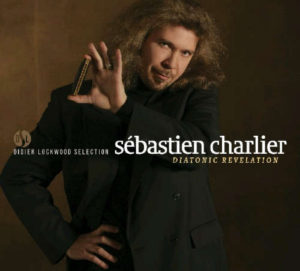 jazzmen who were used to accompany recognized music stars. Benoît and Didier were very patient, we all met the deadline and the album was ready for release at the time Didier launched his new label. This album and what we did later helped me a lot. Didier was a great sponsor for me, he made me play sometimes with him and I had the opportunity to meet wonderful musicians like Alain Caron, Marcel Azzola, Niels Lan Doky etc. It felt like playing in the major league. Meanwhile, I was still working very hard to improve my skills and catch up with these musicians.
jazzmen who were used to accompany recognized music stars. Benoît and Didier were very patient, we all met the deadline and the album was ready for release at the time Didier launched his new label. This album and what we did later helped me a lot. Didier was a great sponsor for me, he made me play sometimes with him and I had the opportunity to meet wonderful musicians like Alain Caron, Marcel Azzola, Niels Lan Doky etc. It felt like playing in the major league. Meanwhile, I was still working very hard to improve my skills and catch up with these musicians.
PH : At that time, many people thought the path you had taken was a dead-end street. And that even if you could achieve it, most players would not be able to play using this technique with enough accuracy, beat and fluidity.
Seb : Yes, it’s true, but that is not my fault actually. Howard Levy also set up this kind of expectations. I only thought I had to release an album to show that it was now possible to play a sophisticated and modern jazz, with a jazz vocabulary that sounds great on a diatonic harmonica. That’s what I aimed to do, and I think I did it with my album “Diatonic Revelation”. At least, it shows it’s possible to do something clean with this instrument. This is also what Didier thought. Jazz press welcomed the album pretty well, journalists acknowledged the achievement but sometimes pointed out the technical demonstration instead of the music itself. However, that was quite a good start, and I even got an award, the famous « New Jazz Talent » award, that goes basically to any unknown musician releasing a decent album.
But there was some resistance in the diatonic world. At that time, overnotes remained kind of mystic. There wasn’t any agreement on the way to get them easily. I used to provide individual lessons but the whole thing kept mostly verbal. People usually thought it was only restricted to an elite group of musicians, and mostly to jazz players. Luckily, I had the opportunity to play blues with Keith B. Brown, using overblows, so I could show how useful they are in any kind of style.
PH : I guess the “harmonica establishment” (by the way, I was a part of it) strongly disputed the new path you were showing. We have to keep in mind your approach deeply challenged our traditional references based on positions, licks and harmonica switches.
Seb : Maybe, but actually I couldn’t say anything about it since I had never used positions at that time. I never considered positions when I was working on Charlie Mc Coy or Jean-Jacques Milteau pieces. Later on, when I started tutoring students, I realized there was a “position system” but, to me, it looked like a mandatory path leading to paralyzing automatisms. I just wanted to play what I heard and to work on harmony in order to hear new things to play. This is a long distance hard work that needs to go beyond patterns and “copied and pasted” ways to play. By using such patterns, probably I would have got something faster out of it, but on the other hand it would have prevented me from achieving my improvisation dream. So I never really went into the position concept. Of course, positions are very helpful to quickly catch what other harp players are doing, but not if you want to get a Chick Corea or Michael Brecker’s solo, so clever at using modulations, substitutions etc. To achieve this, I had to improve my vocabulary, and focus on music instead of the instrument.
PH : Absolutely. However, the concept of transposing instrument is still valid.
Seb : Of course, and I use it from time to time. I can choose a harmonica in a specific key to play a given piece taking into account several criteria. Maybe I will need notes that are not available on a C harmonica (B2 for instance). Moreover, it can offer something to start with before starting to modulate later on. Is it really relevant to play a piece starting in C# with a C harmonica ? I think it’s key to choose the harmonica which allows you to fully express yourself. It takes time and hard work, but at the end of the day you will be able to choose almost any of your harps. Anyway, you have to do what you can, the key thing is to truly play what you have to play.
PH : Let’s go back to your career.
Seb : When I started to feel more comfortable, I moved to fusion which was more consistent with my musical project and what I wanted to promote. But Didier thought I should have kept on playing jazz, so he didn’t join me on this path. If I had done Blues And Beyond Quartet at that time, for sure he would have joined the team!
But I really could achieve my electric project because I played with the guys I had met thanks to him : Alain Caron, Jean-Philippe Lajus, who used to be my agent under Didier’s label. I knew he played keyboards, he had vintage keyboards at home and that was great for my project. Since it was a trilogy, I wanted the first album to 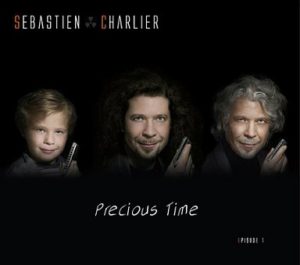 feature kind of 80’s jazz rock keyboards, but also modern ideas and phrasings. I already knew at the time that there won’t be anymore keyboards in the second album. I had to move to a more contemporary fusion. In modern fusion, either you find keyboards delivering modern sounds or you don’t have any keyboards, like in many Allan Holdsworth’s albums. It sounds a bit « power trio », but it’s very effective and it leaves more room to imagination.
feature kind of 80’s jazz rock keyboards, but also modern ideas and phrasings. I already knew at the time that there won’t be anymore keyboards in the second album. I had to move to a more contemporary fusion. In modern fusion, either you find keyboards delivering modern sounds or you don’t have any keyboards, like in many Allan Holdsworth’s albums. It sounds a bit « power trio », but it’s very effective and it leaves more room to imagination.
PH : Let’s move to Precious Time 2.0. You told us your music in this album is the one that you wanted to play when you were listening to Allan Holdworth’s records 25 years ago.
Seb : absolutely. I have to say I had to work very hard on a technical standpoint and mainly on harmony before being able to really get this kind of music. You need to have a strong harmony background to play these solos. So many information and paths come to your mind at the same time, you need to get the whole stuff under control otherwise you lose consistency and what you intended to do. Eventually, in and out have to stay close together in order to deliver a constructed, sophisticated but also free improvisation.
Anyway, no matter technique, music always comes first. The audience doesn’t have to care about harmonica technique. Music is the only thing that really matters. If the audience keeps stuck on the technical side of the solos, it passes up the essence of music, too many information occurs at the same time, but it’s not the musician’s business anyway : he or she has to play what he or she hears.
This is roughly the musicians’ cogito : I hear therefore I play. Later comments, positive or negative criticism are not their business.
PH : Yes, and it’s true the album is really fluid, what are the main differences between the first and the second episodes according to you ?
Seb : Episode 1 referred to the music I wanted to play at the beginning. It featured vintage keyboards and covers of pieces I liked during my teenage years, a phrasing closer to jazz-rock than to modern fusion. I was not looking for an old-school phrasing, I wanted to stick to this kind of music in order not to be off-topic, especially as there wasn’t any serious reference in this field for diatonic harmonica.
Episode 2 got rid of the 80’s-like keyboards in order to go straight away into a more modern fusion, more demanding but still easy to listen. Above all, I thought it was the right time to develop this more detailed and sophisticated phrasing I really wanted to play. Basically, episode 1 was still « electric bebop » oriented, even if the track « What Else » was already sounding like what I achieved in the second episode. On Precious Time 2.0, I wished to reach a new kind of phrasing, more modern, a pinch of madness so to speak, thanks to the speed tonguing technique (to get velocity) and to a different effect pedal kit (for instance, the V256 on Behind The Mirror, which allows to remove all the attacks and get a more « indian » sound). In short, plenty of work upfront, a six-year gestation.
PH : What did you focus on in order to move a step forward ? Your phrasing in Precious 1 was already pure next gen *! Now, it seems you’ve moved another extra step forward.
Seb : I have to confess I like when working makes you improve. So I work hard…for a long while. If I can’t play what I hear, I keep on working again and again until I get it, and then I work again to hear new things.
Since I started, I have been inspired a lot by Dominique Di Piazza. I’ve played with him on a regular basis for about 7 years, and I received a tremendous benefit out of that. I used to transcribe his solos in the past. On 17 (the piece by Jérôme Peyrelevade and Nicolas Espinasse), you can figure out that our solos share many commonalities. We approached the harmonic rhythm the same way although we recorded our tracks separately.
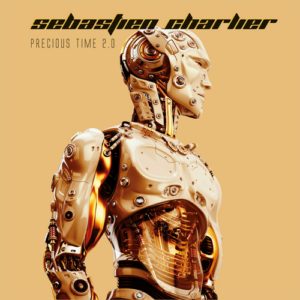 He’s got a one-of-a-kind phrasing in the realm of bass. Drawing inspiration from his innovations, working on Holdsworth’s score, feeling at last comfortable and being able to play it….It opens up many opportunities on a diatonic, as I always thought, even if originally I hadn’t realized how messy would be the path to achieve something viable.
He’s got a one-of-a-kind phrasing in the realm of bass. Drawing inspiration from his innovations, working on Holdsworth’s score, feeling at last comfortable and being able to play it….It opens up many opportunities on a diatonic, as I always thought, even if originally I hadn’t realized how messy would be the path to achieve something viable.
I always thought I could get something out of this instrument, thanks to its very peculiar structure, its grotesque ergonomics featuring three asymmetrical octaves, its unexpected high notes but also legato, sliding and articulation capabilities. I thought I could leverage these features coupled with some effects and a bit of imagination to develop a phrasing I could never achieve with any other instrument. And, at last, really playing what I heard. I see this penultimate episode as an evidence of this leap of faith.
PH : « Leap of faith » : I really like this word, it really depicts your approach. What are your future projects ? Apart from the last episode of the trilogy, but I guess it won’t be released soon considering the « Precious Time » you like to take between each album.
Seb : I’ve just completed recordings for jazz keyboard player Rémi Toulon next album (he also plays on Precious Time 2.0). This album should be released very soon. I’m really pleased to be part of his quartet, his album is a real jewel. Rémi knows how to write music for harmonica ; we’ve known each other for more than ten years, and we had the opportunity to play in duet on different projects, but for the very first time we can play together on a full length album, « officially ». I’m playing acoustic harmonica on this one.
I will also join the Ian Sigurd Quartet, a Swedish band that offered me to meet in Sweden, for some gigs and masterclasses next spring.
Regarding education, I’m working on books aiming to fill the gap between harmonica textbooks for beginners and the Precious Box. You know, I’ve been tutoring for more than twenty years and I think there’s always a lot to do to help avid players to become musicians. This is my priority to clearly set the means to achieve this goal. This is a very long and demanding piece of work but it’s worth the effort because these books aim to allow harmonica players to feel comfortable and ready to play what they hear.
PH : Sebastien, thank you very much for answering my questions, for the grand return of Planet Harmonica !
Seb : And thank you as well. I’m glad to see that Planet Harmonica is back on duty, the harmonica world really missed it. This wealth of information is absolutely helpful in the web jungle.
* Next Gen : another way to call Seb’s approach to diatonic harmonica i.e. playing the harp as any other instrument given that all notes can be played thanks to overblows and bends (chromatic playing on a diatonic harmonica).